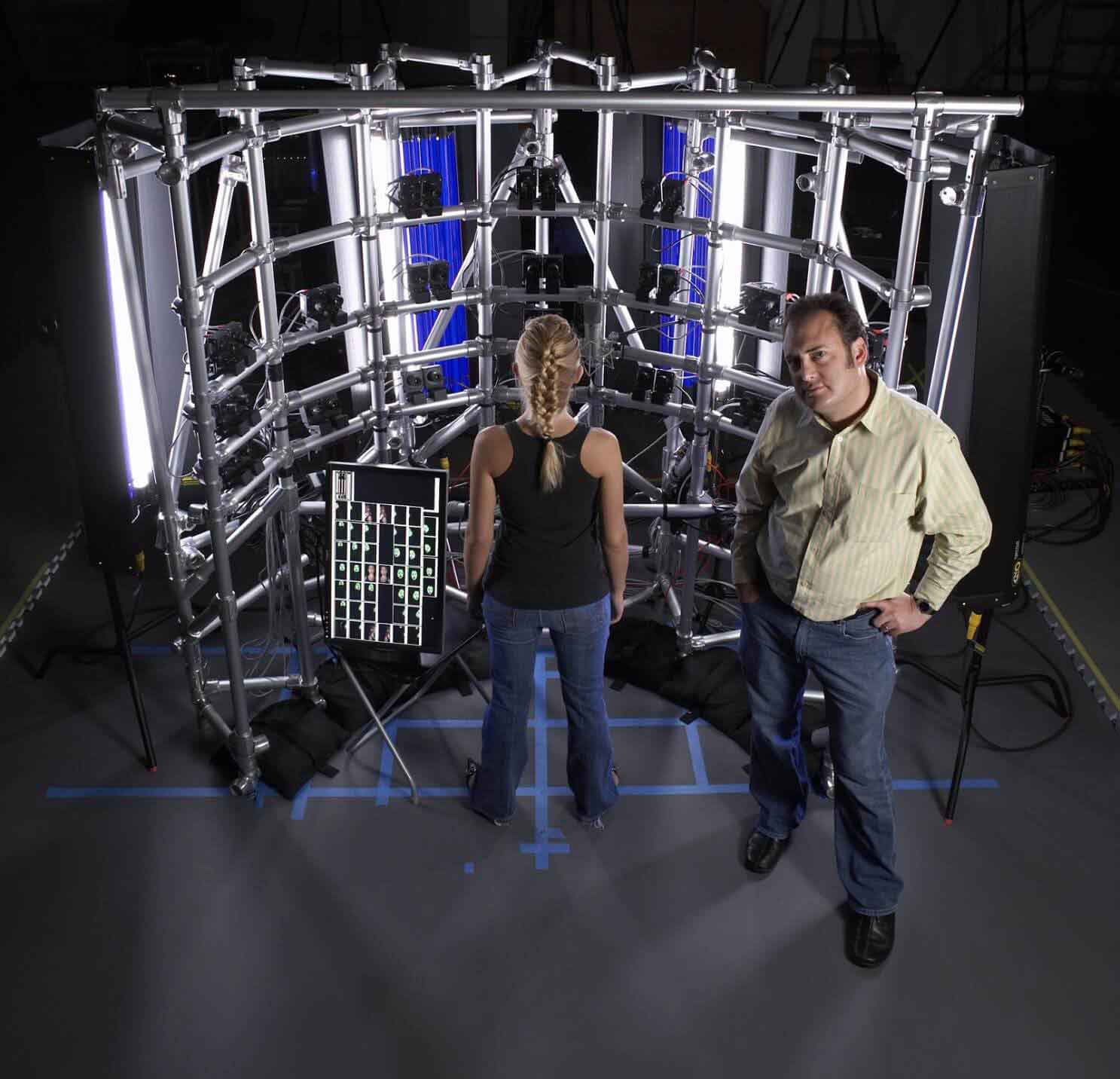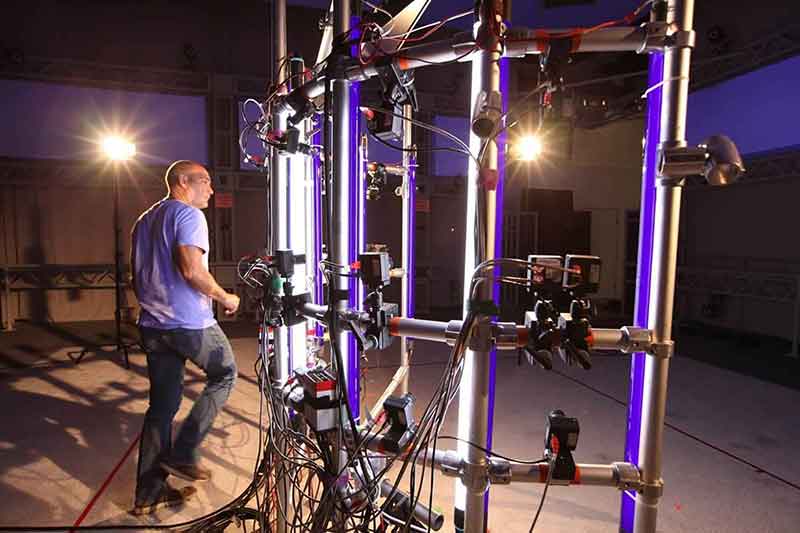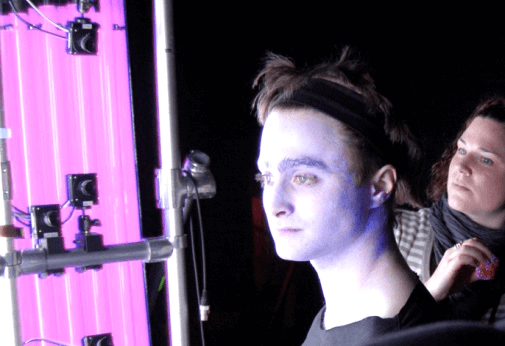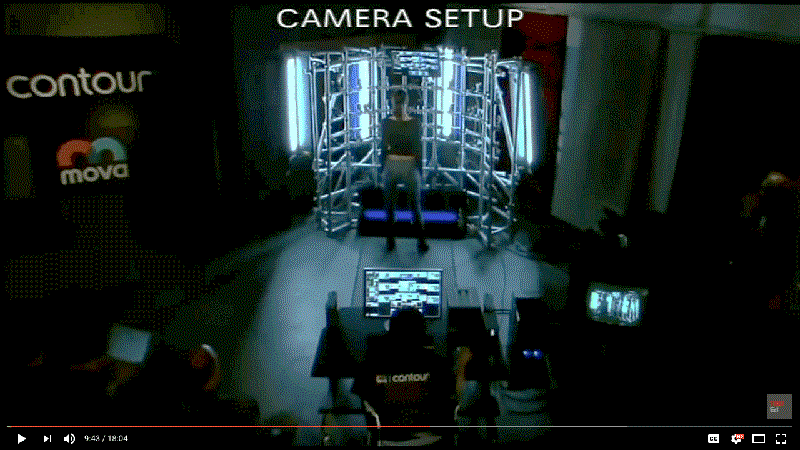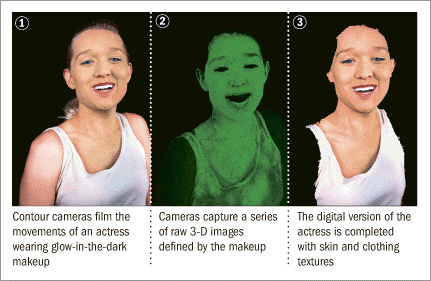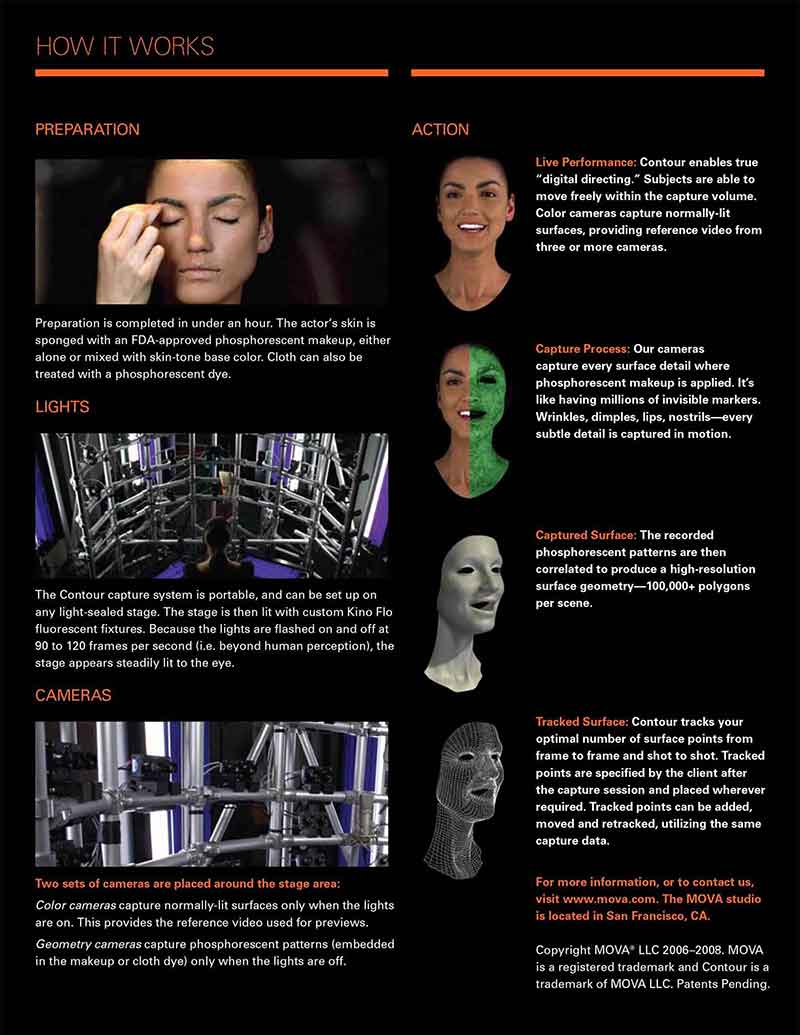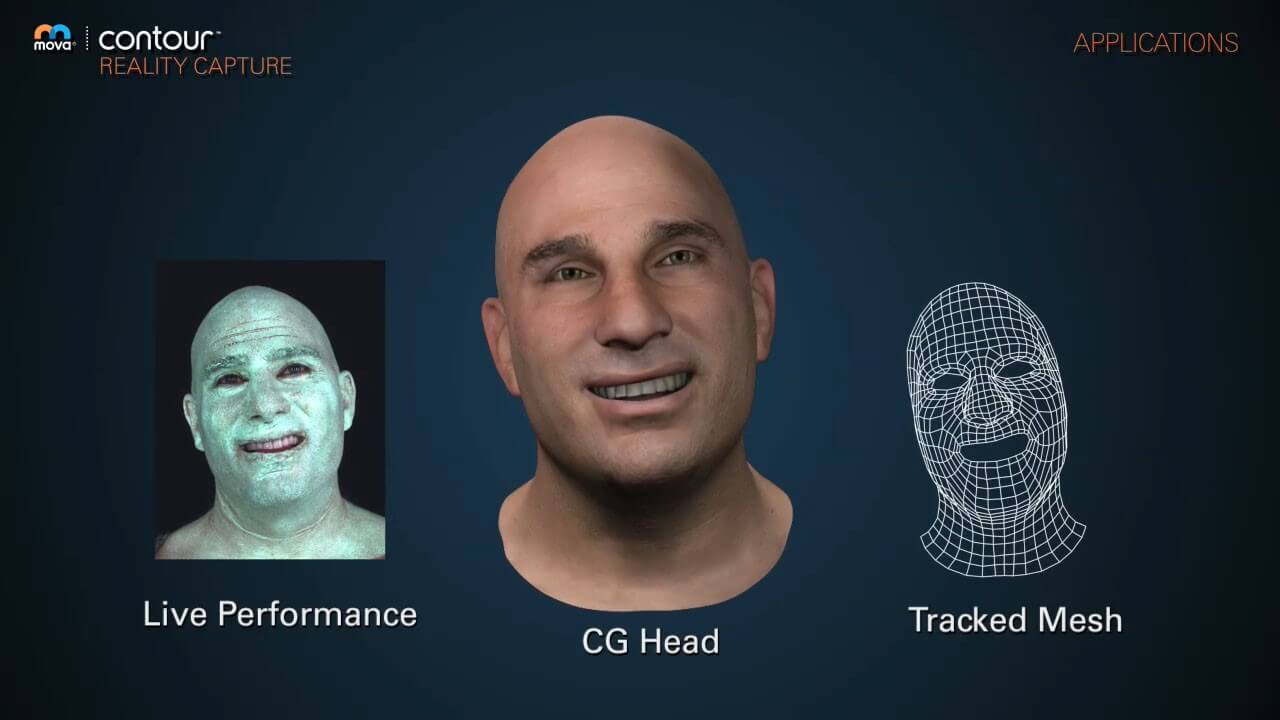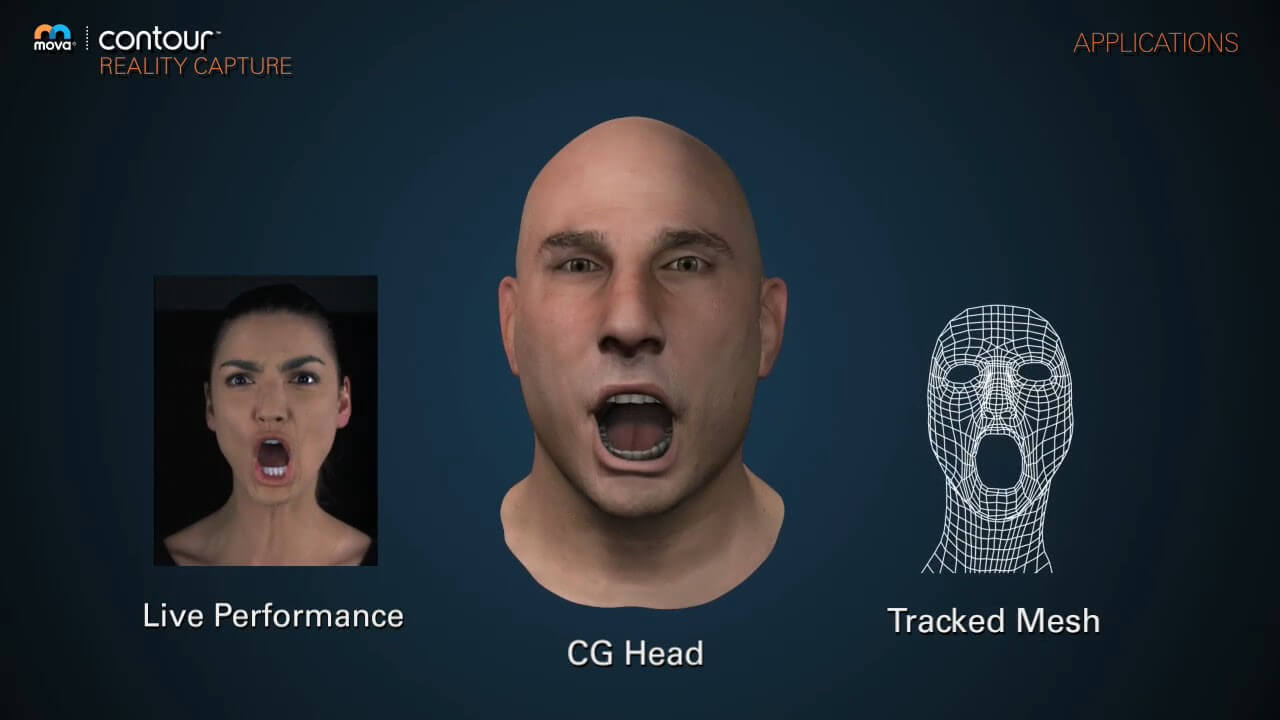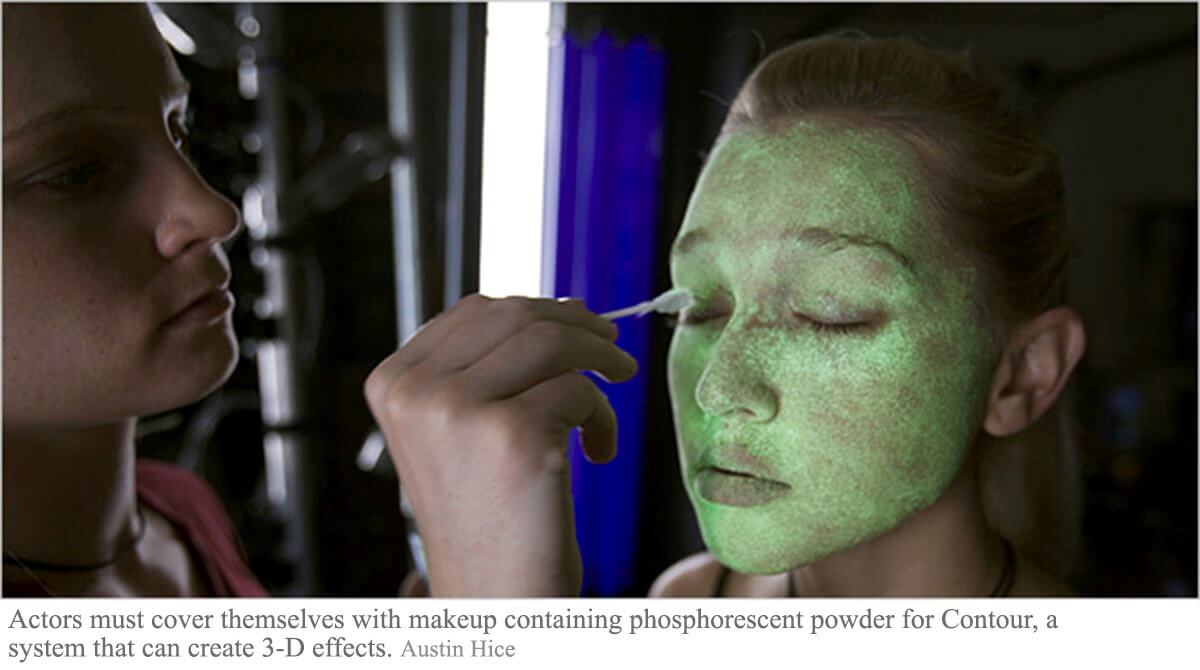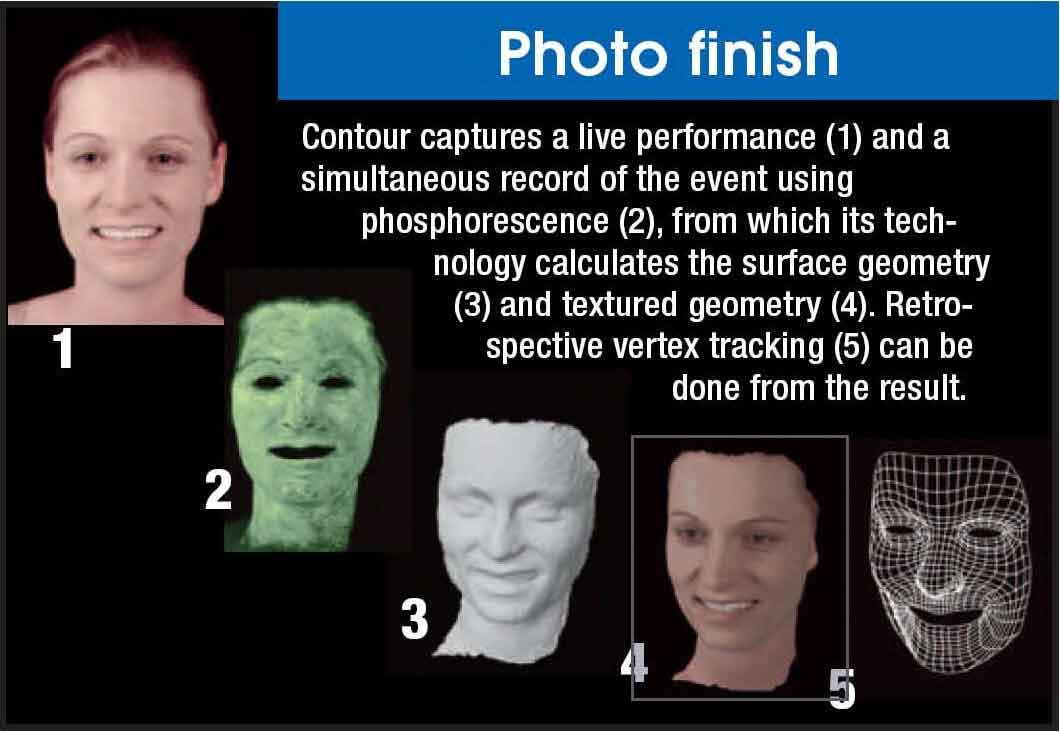The intellectual property lawsuit, filed July 17, 2017, alleges that defendants knew that the proprietary technology they used was owned by Rearden LLC and Rearden Mova LLC, the plaintiffs in the action, and that the company supplying the technology to Disney and Marvel had stolen it outright from a secured storage facility.
WHAT IS MOVA CONTOUR REALITY CAPTURE?
The revolutionary MOVA Contour technology at the core of the lawsuit has been used in films to capture the most subtle facial performances from actors such as Brad Pitt in The Curious Case of Benjamin Button, Jeff Bridges in Tron: Legacy, Mark Ruffalo as the Hulk in The Avengers, Daniel Radcliff and Rupert Grint in Harry Potter and the Deathly Hallows, Parts 1 and 2, and many other blockbuster movies. The software output permits visual effects studios to project the actors’ captured facial performances onto computer generated (CG) faces bringing the CG characters to life.
Disney had contracted with Rearden to use the MOVA Contour system in four films as the owner of the MOVA Contour copyrights, patents, and other proprietary technology, which includes its patented computer program, arc-shaped Contour camera and lighting rig, synchronized cameras at multiple angles, and specially-mixed phosphor-based makeup used to capture thousands of control points on the actor’s face.
In 1999, serial inventor and graduate of Apple and Microsoft, Steve Perlman, formed Rearden LLC and self-funded the company as an incubator for advanced technology including facial performance capture and other ground-breaking inventions. Perlman’s facial performance capture innovations were used in fifteen major motion pictures and were widely acclaimed in the visual effects and broader motion picture industries. MOVA Contour ushered in a new age of possibilities for moviemakers like the defendants Disney and Marvel.
ABOUT THE IP THEFT
In 2012, a Rearden employee (Greg LaSalle) began secret negotiations with Digital Domain 3.0 (DD3), to sell the MOVA Contour system for his personal enrichment, without Rearden’s knowledge. LaSalle had also secretly offered the MOVA Contour technology in March 2013 to Disney and its former Lucas Films subsidiary Industrial Light and Magic.
Rearden wrote a cease and desist letter to LaSalle in March 2013, reasserting that it owned the MOVA Contour intellectual property, that LaSalle had taken it illegally, and that Rearden would take legal action if necessary. According to the complaint, LaSalle then notified interested parties including Disney and its Industrial Light and Magic division of Rearden’s claims, both of which swiftly dropped out of negotiations for MOVA Contour.
A mysterious Chinese company affiliated with DD3 called Shenzhenshi then appeared on the scene claiming to have bought the MOVA Contour technology and to have licensed it to DD3. In 2013, “LaSalle had access to the secure storage facility where the physical MOVA Contour apparatus was kept, and assisted DD3 in taking the patented MOVA Contour physical apparatus and copies of the copyrighted Contour Program,” according to the lawsuit.
DD3 then began secretly offering MOVA Contour facial performance capture services to major motion picture studios and production companies, including defendants.
DISNEY'S BLOCKBUSTER SUCCESS THANKS TO MOVA
Disney went on to use the ill-gotten MOVA Contour capabilities for Beauty and the Beast, the tenth highest grossing movie of any rating of all time and the highest grossing PG-rated film of all time.
As detailed by the complaint, the MOVA technology was critical to Disney’s ability to successfully recreate one of its most valuable franchises. Director Bill Condon went further, expressly crediting the success of the CG Beast to the unique capabilities of MOVA Contour and attributing the film’s success entirely to MOVA Contour, saying “…we could get everything else in this movie right, but if we didn’t get a Beast that people believed in then [the movie] wouldn’t work.” This sentiment was affirmed by Beauty and the Beast’s editor, Virginia Katz: “…the main concern, for me and I think for all [working on the movie], was how that the Beast was going to be visualized. I mean, if the Beast didn’t work, then the film wouldn’t work.”
WHAT THE LAWSUIT SEEKS
The suit seeks all just and equitable patent, copyright, and trademark remedies on behalf of the inventors and owners of the MOVA Contour systems and methods.
The lawsuit, filed in the U.S. District Court for the Northern District of California, brings claims of infringement of five of Rearden’s patents, copyright infringement, and trademark infringement for allegedly using stolen intellectual property of the MOVA Contour system and using the patented technology and photos of its generated output to promote films.
CASE TIMELINE
Judge Jon S. Tigar issued an order denying in part a motion for summary judgment on the issue of causal nexus, in other words, the causal relationship between the copyright infringements and movie studio profits from films identified in the complaint. Defendants argued casual nexus could not be proved, however the court ruled that the plaintiff, Rearden, had produced evidence related to the blockbuster films Beauty and the Beast, Guardians of the Galaxy, and Deadpool demonstrating how influential Rearden’s MOVA software had been in making the films and their subsequent box office success. “As to these films, it would be reasonable for the jury to infer from Rearden’s evidence that Defendants advertised their use of MOVA and used MOVA-based clips in the film trailer in order to drive interest in the films and thereby increase film profits,” the order states.
Judge Tigar went on to state, “Rearden has introduced evidence that Defendants not only included MOVA-based clips in the record-setting Beauty and the Beast trailer, with the knowledge that film trailers are one of the biggest drivers of film attendance, but also prepared and made external statements touting the use of the MOVA software as part of their promotions of the Motion Pictures… The Court concludes that Rearden has identified sufficient, non-speculative evidence to satisfy its burden at the summary judgment stage and is entitled to present its causal nexus theories and evidence to the jury as to the three films for which it offered evidence.”
Hagens Berman files additional complaints against Fox Twentieth Century, Paramount Pictures and Crystal Dynamics.
